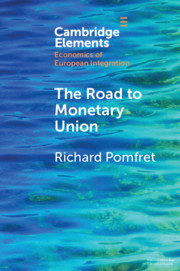Element contents
The Road to Monetary Union
Published online by Cambridge University Press: 12 February 2021
Summary
Keywords
- Type
- Element
- Information
- Online ISBN: 9781108962315Publisher: Cambridge University PressPrint publication: 11 March 2021
References
- 3
- Cited by



